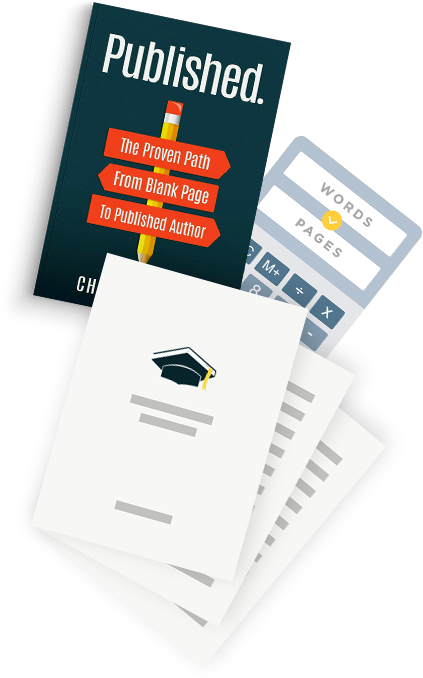Horror is a genre of fiction. Here, we’re talking about novels, although you could apply these rules, on a smaller scale, to short stories. The absolute fundamental components of a novel—how to write good characters, how to write a compelling plot, et cetera—won’t change much from genre to genre. But that being said, I’m going to show you how these components can look different in horror as opposed to, say, romance or fantasy.
Follow these five tips to kick your story off with a nail-biting start.
1. Figure out the fear factor
What makes your story scary?
It sounds like a simple question, but it is at the crux of your entire story. Horror explores fear. You want to evoke fear in the reader (or at least revulsion).
A lot of new horror writers mistakenly think that this is done through shock value. Crank the violence and supernatural happenings up to a ten, kick back, and watch the readers clutch their pearls.
But shock value is cheap. Cranking the drama and having the most severe thing happen at every turn ruins the pace and flow of your story (you can’t keep things at a dramatic ten all the time—you can only do it once, in the climax). It feels juvenile. You have to carefully choose what you use to evoke fear in the reader, and you have to know why you’re using it.
For example (and spoilers for Hereditary): in Hereditary, there’s a shot of Toni Collette plastered in the corner of the ceiling in Peter’s room while he sleeps. It’s great; it makes me want to throw up. Not only is the visual startling, but it draws on a deeper tension between Peter and his mother. Peter feels preyed upon by his mother in more ways than one, and this image of her looking menacingly down at him while he is in bed, vulnerable, definitely gets that across.
Identifying your subgenre will go a long way in helping you know what to use and how to use it. Are you writing splatterpunk? You’re probably going to be working with a lot of graphic violence. Supernatural thriller? You’ll want to know what sorts of paranormal creepiness you’re working with.
2. Get to know your main character
How do you make your audience afraid of something? It doesn’t have as much to do with objective scariness as you might think—as we talked about before, contextless scary nonsense won’t work.
What makes that Hereditary scene work so well is the real fear we feel on Peter’s behalf. You kind of think Toni Collette is going to drop from the ceiling and kill him, and you don’t want that for either of them—for Toni Collette, who has already lost a kid, and for Peter, who doesn’t deserve to die for what happened.
You need your characters to be afraid of whatever the scary thing is in your story (we’ll call this ‘the monster,’ even though it might not be). The monster should be particularly scary to your characters in their situations. Sure, a decapitated dog is gross, but if it’s your main character’s childhood dog who passed and was buried a decade ago? That’s worse! Did your main character grow up to be a veterinarian who cares a lot about animals before making this grisly discovery? Ick! (Great!)
You also want the monster to pose a genuine threat to your main characters. Maybe it might force them to confront an ugly truth about themselves, or maybe it’ll straight up kill them—usually both. Who is your character, what are they afraid of, why are they afraid of it, and what stands to happen if they’re forced to confront it?
3. Hook the audience
Introduce the reader to a character immediately—we talked about the components of characterization particular to horror, so I won’t rehash that here. Readers connect to characters, so give them one as soon as possible.
You also want to make good use of things like imagery, atmosphere, and description. Waste absolutely none of your reader’s time—root them in the setting with your best foot forward and reward them for their attention with a truly compelling promise.
That’s what the start of a story is, at the root. You’re making a promise to the reader. What is this story going to be about? Who are the characters? What’s the kind of threat we’re going to deal with, and what are the ways we might deal with it? What are the themes, core concepts, big-picture ideas? Will I be able to sleep for the next week? You’re letting them know up front, which is the polite thing to do.
4. Use suspense
As you bait your hook for the beloved reader, you might be considering what, exactly, you should reveal in that first chapter. Do you show them the monster right away, so they know to fear it, or do you keep the monster lurking in the shadows, where its ambiguity makes it even scarier?
There’s no right answer. A movie like Hereditary doesn’t show you the literal monster until its final minutes, but it hints at the monster in the story’s opening. The movie’s “about” a demon-worshiping cult, but it’s about how grief and generational trauma destroys families from the inside out. We don’t meet the demon until the end, but the story opens with a shot of the mom’s dollhouse recreation of the family, completely perfect and completely powerless in the face of the impending plot.
If you don’t show the monster, at least hint at one. Give the reader a sense of what kind of monster you’re working with—is this a guy with a chainsaw, a generational curse, or a ghost? Create suspense by showing or hinting at the monster and then, subtly, pointing them toward your main character.
5. Set the tone
As a part of your promise to the reader, set the tone of your story. Not only does this mean giving them a taste of your writing style, characterization, and storytelling, but it also means giving them a sense of your themes.
Is your story hopeful at its core, or nihilistic? Does the main character survive, or do they perish? Obviously, you don’t want to tell the reader how things turn out in the first chapter, but you do want to start with a tone that’s consistent with your themes. You can also set the tone with a great cover. Check out the articles below for more ideas on setting the tone:
- Related: The Best Slasher Books for Horror Design Tips
- Related: Classic Horror Books
In the first episode of Game of Thrones, we see wholesome bonding between family and friends. The viewer can expect to see more of this kind of thing moving forward—there are lots of great relationships in Game of Thrones. In the episode’s final scene, we also see some deeply unwholesome bonding between family, between Cersei and Jamie, and this scene ends with Jamie pushing a little boy out a window with the expressed intent of killing him. This first episode lets us know that our core themes include love, family, and protecting the people we love, and it gives us a sense of what kind of moral spectrum we’re working with.
Examples of How to Start a Horror Story
Personally, I learn best by example, so let’s take a look at some good horror story starts. I’ve chosen mostly short stories on purpose—if you get the chance to read the rest of these stories, you can see how the themes and ideas are brought up in these opening lines as the author introduces their characters and narrative voice.
1. The Tell-Tale Heart by Edgar Allen Poe
“True! — nervous — very, very dreadfully nervous I had been and am; but why will you say that I am mad? The disease had sharpened my senses — not destroyed — not dulled them. Above all was the sense of hearing acute. I heard all things in the heaven and in the earth. I heard many things in hell. How, then, am I mad? Hearken! and observe how healthily — how calmly I can tell you the whole story.”
2. The Call of Cthulu by H.P. Lovecraft
“The most merciful thing in the world, I think, is the inability of the human mind to correlate all its contents. We live on a placid island of ignorance in the midst of black seas of infinity, and it was not meant that we should voyage far. The sciences, each straining in its own direction, have hitherto harmed us little; but some day the piecing together of dissociated knowledge will open up such terrifying vistas of reality, and of our frightful position therein, that we shall either go mad from the revelation or flee from the light into the peace and safety of a new dark age.”
3. The Haunting of Hill House by Shirley Jackson
“No living organism can continue for long to exist sanely under conditions of absolute reality; even larks and katydids are supposed, by some, to dream. Hill House, not sane, stood by itself against its hills, holding darkness within; it had stood for eighty years and might stand for eighty more. Within, walls continued upright, bricks met neatly, floors were firm, and doors were sensibly shut; silence lay steadily against the wood and stone of Hill House, and whatever walked there, walked alone.”
4. The Yellow Wallpaper by Charlotte Perkins Gilman
“It is very seldom that mere ordinary people like John and myself secure ancestral halls for the summer.
A colonial mansion, a hereditary estate, I would say a haunted house, and reach the height of romantic felicity—but that would be asking too much of fate!
Still I will proudly declare that there is something queer about it.
Else, why should it be let so cheaply? And why have stood so long untenanted?
John laughs at me, of course, but one expects that in marriage.
John is practical in the extreme. He has no patience with faith, an intense horror of superstition, and he scoffs openly at any talk of things not to be felt and seen and put down in figures.
John is a physician, and perhaps—(I would not say it to a living soul, of course, but this is dead paper and a great relief to my mind)—perhaps that is one reason I do not get well faster.
You see, he does not believe I am sick!
And what can one do?”
Horror Story Prompts to Get You Started
Ready to write your own horror story? Try using a writing prompt to help you get started. Feel free to tweak these however you like—these are for you to use as a springboard for your own ideas. The Self-Publishing School has a list here, Screencraft has one here, and Squibler has one here.
That’s almost three hundred writing prompts in total, so there should be something there that catches your eye. Happy writing!



